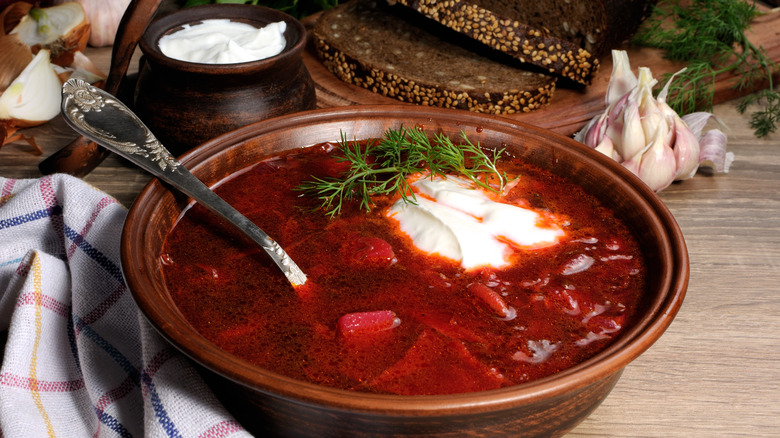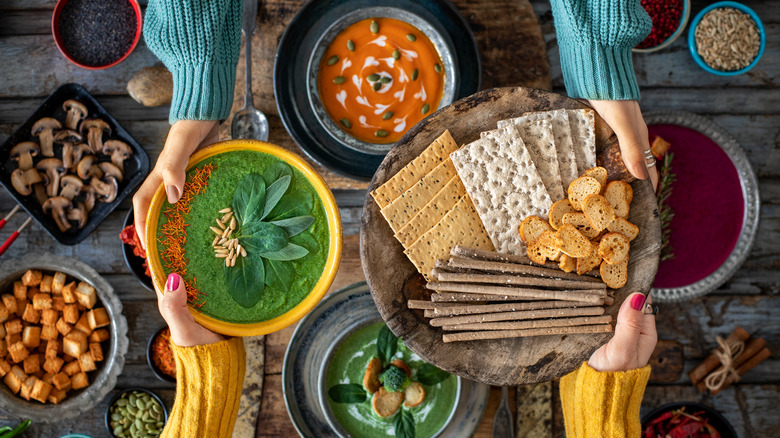The Type Of Bowl You Use Can Seriously Impact Your Soup Experience
If you only make soup in the fall and winter, some would argue that you are not living your life to its fullest. Cold weather puts hearty soups and stews at the top of the dinner docket, but boeuf bourguignon, lentil soup, and phở make up only a tiny portion of the vast canon of liquidy meals.
Spring is a fine time to indulge in creamy asparagus and leek vichyssoise, verdant spinach soup with lemon and farro, and chilled pea soup with mint and sour cream. A hot summer day might call for a soup that trades the stove for the blender and also makes use of in-season produce, like a refreshing gazpacho from leftover Panzanella salad. You get the idea.
Such a diverse array of soups deserves a diverse array of bowls, don't you think? As it happens, the vessel you choose for your soup can determine a lot more than aesthetics.
Size matters — and so do a lot of other things
The next time you make soup, you might consider taking a holistic approach to the business of choosing a bowl. Size is important, but so is varnish; shape; vibes. When it's time to ladle up, things to consider include the material, size, height and width, straight or rounded sides, and raised bowls (which lessen the gap between mouth and table) into account.
If you have strong wrists and care about your soup staying hot, you might choose a stoneware bowl in regard to the first criterion. But if you value lightweight dishes that clink elegantly against your spoon, you might go for porcelain or tempered glass. Likewise, if you're prone to tongue burns, you might want a wide and shallow bowl that lets heat escape, as bowls that are deep and narrow "create more thermal mass." All in all, each bowl category has its upsides and its downsides.
What's the occasion?
According to Etiquette Scholar, there are seven basic types of soup bowls: soup plates (wide and shallow with a "flanged rim"), coupe soup bowls (saucer-shaped and reserved "only for informal dining"), soup-cereal bowls (also informal, and narrower and deeper than a plate or coupe), lug soup bowls (think French onion soup), covered soup bowls, cream soup bowls, and bouillon cups. The type of soup, including how chunky, creamy, or smooth it is, and whether it's served hot or cold all matter to what type of bowl you use.
Traditionally, chunky stews are served in shallow, wide bowls, since they're usually pretty hot; pureed soups, such as the aforementioned vichyssoise, are served in deep bowls that keep them from getting cold; clear soups and broths are designated to narrow cup-like bowls, which keep them at a steady temperature.
But unless you're attending a royal dinner or trying to pass your etiquette class, all you need to know for your home dining needs are the basic principles of heat retention. Aside from that, your own personal preference is the only thing that matters.


